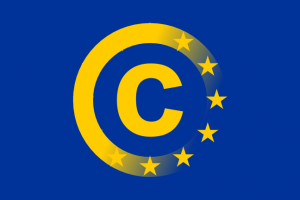 Uit het persbericht: Het College van Toezicht collectieve beheerorganisaties Auteurs- en naburige rechten (CvTA) publiceert vandaag een aantal rapportages. Het eerste is het Jaarrapport 2012. Het tweede betreft het beleidskader voor het toezicht van het CvTA; Beleidskader Toezicht Collectief Beheer. Naar aanleiding van deze stukken heeft het CvTA een Activiteitenprogramma 2014 vastgesteld. Daarmee worden acties aangekondigd op grond van het Jaarrapport 2012 en het Beleidskader Toezicht Collectief Beheer, dat is gebaseerd op de nieuwe wetgeving voor het toezicht die in werking trad op 1 juli 2013.
Uit het persbericht: Het College van Toezicht collectieve beheerorganisaties Auteurs- en naburige rechten (CvTA) publiceert vandaag een aantal rapportages. Het eerste is het Jaarrapport 2012. Het tweede betreft het beleidskader voor het toezicht van het CvTA; Beleidskader Toezicht Collectief Beheer. Naar aanleiding van deze stukken heeft het CvTA een Activiteitenprogramma 2014 vastgesteld. Daarmee worden acties aangekondigd op grond van het Jaarrapport 2012 en het Beleidskader Toezicht Collectief Beheer, dat is gebaseerd op de nieuwe wetgeving voor het toezicht die in werking trad op 1 juli 2013.
Jaarrapport 2012
In het verslagjaar 2012 zijn belangrijke verbeteringen opgetreden in de opzet van bestuur en organisatie van de vijf collectieve beheersorganisaties (CBO’s) onder toezicht. Buma realiseerde, samen met Stemra, een nieuwe governancestructuur. SENA voerde eveneens een nieuw bestel in. Alle vijf onder toezicht staande CBO’s beschikten over een onafhankelijke voorzitter. Ook het merendeel van de 12 door de nieuwe wetgeving onder toezicht staande organisaties voldoet aan deze eis. Er werden verbeteringen aangebracht in de transparantie, inspraakmogelijkheden voor rechthebbenden, alsmede in de interne en externe verantwoording. Zo kwam er meer inzicht voor betalingsplichtigen en rechthebbenden door publicatie van jaarverslagen die voldeden aan de wettelijke eisen van het Burgerlijk Wetboek. Ook publicatie van regelingen voor de bepaling van tarieven, kortingen en licentievoorwaarden was positief. Nog niet overal bestaan geschillenregelingen.
De totale incasso van de vijf CBO’s onder toezicht in 2012 is gestegen met 5% ten opzichte van 2011, ondanks de tegenvallende inkomsten bij Stichting de Thuiskopie en Stichting Leenrecht. De verdeling van gelden ten behoeve van rechthebbenden daalde met 2% in 2012. Het CvTA zal kritisch blijven volgen of de incassogelden binnen de wettelijke termijn van 3 jaar aan rechthebbenden worden uitgekeerd. Dit is ook noodzakelijk in relatie tot de wettelijke verplichting om tot beheersing van de uitvoeringskosten te komen. De kostenpercentages voldoen bij een flink aantal van de onder toezicht staande CBO’s aan de wettelijke regels.
Beleidskader Toezicht Collectief Beheer en Activiteitenprogramma 2014
Het Beleidskader Toezicht Collectief Beheer dient ertoe om de CBO’s duidelijk te maken hoe het CvTA het toezicht zal uitoefenen. Het CvTA heeft het gepresenteerd aan de CBO’s en de branchevereniging VOI©E. Aangezien het CvTA inzet op de laagst mogelijke toezichtslasten is met de brancheorganisatie VOI©E afgesproken dat het CvTA bereid is het door VOI©E geïntroduceerde keurmerk te gebruiken voor het toezicht. Daarbij zal het CvTA het keurmerk ieder jaar valideren en staat het keurmerk verdere informatieverstrekking aan het CvTA niet in de weg.
Het toezicht zal open, actief en onafhankelijk worden uitgeoefend. Het CvTA zal proportioneel optreden waar het mogelijke sanctionering betreft die in de nieuwe wettelijke regeling is opgenomen. Het instrumentarium van het CvTA zal verder worden uitgewerkt en met de CBO’s worden gedeeld. Bevindingen en oordelen van het CvTA worden gepubliceerd op de website van het CvTA, evenals eventuele opgelegde sancties.
In 2014 zal het CvTA ‘de staat’ van de 17 onder toezicht staande CBO’s over de volle breedte van de toezichtregelgeving in beeld brengen. Mede aan de hand hiervan zullen afspraken worden gemaakt over verbetering van de naleving waar dat nodig blijkt, waarbij termijnen worden afgesproken. Ten slotte zal het CvTA wanneer daartoe aanleiding bestaat bij CBO’s actief toezicht uitoefenen naar aanleiding van (dreigende) incidenten of belangrijke ad hoc ontwikkelingen.
 Uitspraak ingezonden door Kitty van Boven, I-ee.. Auteursrecht - Foto - licentie - omvang overeenkomst. Partijen hebben een licentie gesloten voor het gebruik van foto's ten behoeve van de brochure van gedaagde. De rechtbank oordeelt dat partijen eenmalig gebruik in de brochure zijn overeengekomen en dat ten tijde van het sluiten van de overeenkomst niet is gesproken over de huisstijl of de website. Het staat niet vast dat Brouwer ervan op de hoogte moest of kon zijn dat een nieuwe onderneming een huisstijl ontwikkelt en het niet stopt bij een brochure.
Uitspraak ingezonden door Kitty van Boven, I-ee.. Auteursrecht - Foto - licentie - omvang overeenkomst. Partijen hebben een licentie gesloten voor het gebruik van foto's ten behoeve van de brochure van gedaagde. De rechtbank oordeelt dat partijen eenmalig gebruik in de brochure zijn overeengekomen en dat ten tijde van het sluiten van de overeenkomst niet is gesproken over de huisstijl of de website. Het staat niet vast dat Brouwer ervan op de hoogte moest of kon zijn dat een nieuwe onderneming een huisstijl ontwikkelt en het niet stopt bij een brochure.
 Burton heeft een gelijknamige sportauto ontworpen. De Graaf verkocht sinds 2000 onderdelen van de Burton, en biedt onder vermelding van Hersteller Parts Industries en dezelfde artikelnummers eigen onderdelen aan. De registratie van de Burton Car als Beneluxmodel wordt niet bewezen met slechts een ontvangstbevestiging van het depotformulier uit 2001. De beschermingsduur voor een niet-ingeschreven gemeenschapsmodel uit artikel 11 lid 1 GModVo, voor zover dit heeft bestaan, is inmiddels verstreken. De vormgeving van de onderdelen zijn in hoge mate technisch bepaald en zijn niet auteursrechtlijk beschermd. Er is geen sprake van verwarringsgevaar bij het vermelden van dezelfde artikelnummers bij de Herstellerproducten.
Burton heeft een gelijknamige sportauto ontworpen. De Graaf verkocht sinds 2000 onderdelen van de Burton, en biedt onder vermelding van Hersteller Parts Industries en dezelfde artikelnummers eigen onderdelen aan. De registratie van de Burton Car als Beneluxmodel wordt niet bewezen met slechts een ontvangstbevestiging van het depotformulier uit 2001. De beschermingsduur voor een niet-ingeschreven gemeenschapsmodel uit artikel 11 lid 1 GModVo, voor zover dit heeft bestaan, is inmiddels verstreken. De vormgeving van de onderdelen zijn in hoge mate technisch bepaald en zijn niet auteursrechtlijk beschermd. Er is geen sprake van verwarringsgevaar bij het vermelden van dezelfde artikelnummers bij de Herstellerproducten. Uit het
Uit het 
 Bijdrage ingezonden door Bas Kist,
Bijdrage ingezonden door Bas Kist,  nden door Nina Hillebrand en Juliette van Balen,
nden door Nina Hillebrand en Juliette van Balen,  Thuiskopieheffing. Points out that the cultural sector provides 5 million jobs in the EU and 2.6 % of its GDP, is one of the main drivers of growth in Europe and a wellspring of new and non-relocatable jobs, stimulates innovation and offers an effective means of combating the current recession; Recalls that copyright law should balance the interests of, inter alia, creators and consumers; considers, in this connection, that all European consumers should have the right to make private copies of legally acquired content; Calls on the Commission, therefore, to present a legislative proposal to review Directive 2001/29/EC on the harmonisation of certain aspects of copyright and related rights in the information society, including a provision on the full harmonisation of exceptions and limitations, inter alia with regard to private copying.
Thuiskopieheffing. Points out that the cultural sector provides 5 million jobs in the EU and 2.6 % of its GDP, is one of the main drivers of growth in Europe and a wellspring of new and non-relocatable jobs, stimulates innovation and offers an effective means of combating the current recession; Recalls that copyright law should balance the interests of, inter alia, creators and consumers; considers, in this connection, that all European consumers should have the right to make private copies of legally acquired content; Calls on the Commission, therefore, to present a legislative proposal to review Directive 2001/29/EC on the harmonisation of certain aspects of copyright and related rights in the information society, including a provision on the full harmonisation of exceptions and limitations, inter alia with regard to private copying.
























































































